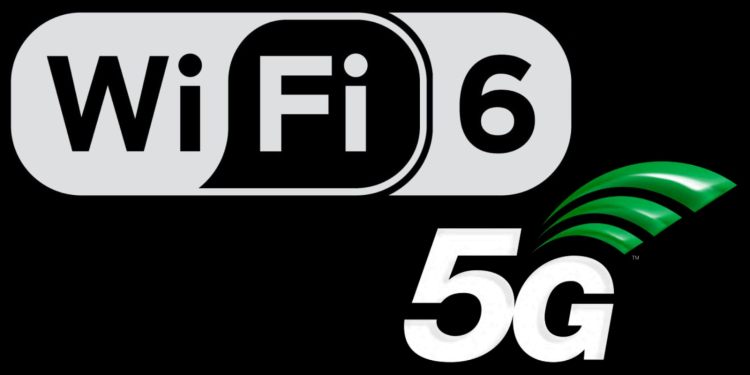At one point, some observers believed that cellular and Wi-Fi technologies were locked in a zero-sum game, such that higher-speed 4G or 5G networks would eventually eliminate the need for Wi-Fi in transmitting data wirelessly. But as 5G transitioned from concept to reality, a more nuanced relationship became apparent: Wi-Fi would continue to have an important role, evolving alongside 5G, and possibly even intertwining with it.
This week, the Federal Communications Commission (FCC) set an important date for the future of Wi-Fi, announcing that its five commissioners will vote on April 23 to permit or disallow “unlicensed” use of the 6GHz radio band. It’s important to understand what that actually means, so let’s break it down.
When we talk about 6GHz spectrum, think about a radio that can tune from 87.7 to 107.9FM, except the numbers here are much higher — 5,925 to 7,125. That’s a huge 1.2GHz-wide block of wireless spectrum covering the entire 6GHz range (6,000 to 6,999), plus bits of adjacent 5GHz and 7GHz frequencies.
In the context of 20-year-old Wi-Fi, you can visualize this as an old highway roughly doubling in width. The FCC is letting companies add more and wider lanes that simultaneously decrease congestion and increase the variety of vehicles that can use the road.
June 5th: The AI Audit in NYC
Join us next week in NYC to engage with top executive leaders, delving into strategies for auditing AI models to ensure fairness, optimal performance, and ethical compliance across diverse organizations. Secure your attendance for this exclusive invite-only event.
The other key detail is “licensed” versus “unlicensed” spectrum. Unlike licensed spectrum, which is restricted to one company for a specific geography (say, a 2.5GHz block licensed by T-Mobile in Philadelphia), unlicensed spectrum is effectively open to multiple users and multiple uses across the entire country, assuming they follow FCC certification and broadcasting rules. Think of the licensed-unlicensed difference as a narrow private road reserved for magenta Volkswagens versus an open highway accessible by any safety-certified vehicle.
Wi-Fi is expected to be the primary beneficiary of the FCC’s vote, as an industry group called the Wi-Fi Alliance is already champing at the bit to use 6GHz frequencies. After debuting the sixth generation of Wi-Fi (“Wi-Fi 6”) in devices that hit shelves last year, the Alliance had to find a way to differentially label a Wi-Fi 6 variant that added 6GHz support to previously included 2.4GHz and 5GHz frequencies. It came up with “Wi-Fi 6E” as a name, and the first Wi-Fi 6E devices should be ready to go soon after the FCC vote, which is all but certain to approve the new 6GHz allocation.
But it turns out there’s a role for 5G in the new 6GHz spectrum, as well. Starting with the next release of the 5G standard, a currently obscure feature called 5G-U (“5G-unlicensed”) will enable 5G devices to make use of unlicensed spectrum. Currently, 5G networks use frequencies below 2.6GHz, around 3.5GHz, and above 24GHz in various parts of the world, but 5G-U will eventually let devices opportunistically access 5G using 5GHz, 6GHz, and/or some higher frequencies when they’re needed and available. Picture the magenta Volkswagen merging from the clogged private road onto the open highway as appropriate, or in some cases, simultaneously using both roads at once to deliver an especially big load.
Once 5G and Wi-Fi 6E both use the same 6GHz spectrum, you might ask again why this isn’t the zero-sum game discussed at the beginning of this article — in other words, why 5G’s gain won’t necessarily be Wi-Fi’s loss. There are multiple answers, but the most straightforward ones are about money, infrastructure, and connectivity.
For the time being, 5G devices are individually subscribed to cellular networks and generally use metered data to individually connect to the outside world, while Wi-Fi connects multiple devices to an internal network, relying on a single point of connection (typically fiber, but potentially cellular) to reach the outside world. Think of this as the difference between 200 straw-sized device pipes connecting to the ocean versus two huge pipes supporting 100 connected devices.
There are reasons each type of system could appeal to different users. Equipping a massive outdoor stretch of farmland with Wi-Fi might make less sense than scattering 5G cellular sensors where they’re needed and monitoring them from afar. On the other hand, a smaller automated manufacturing facility may have network security or time sensitivity concerns that 5G — such as a private 5G network, owned by the enterprise rather than a cellular carrier — can handle better than Wi-Fi.
One-size-fits-all isn’t the right approach here. Some consumers will continue to be best served by a fiber-to-Wi-Fi router system at home with 5G cellular service outdoors, while others will leverage their phones’ mobile 5G service to provide hotspot service when they’re inside. Businesses will make the choice between equipping their offices with Wi-Fi 6E routers or paying for individual users’ 5G subscriptions, in some cases doing both, and in others, neither. Meanwhile, 5G devices with Wi-Fi 6E chips will become more common, enabling phone, tablet, and traditional computer users to take advantage of whatever spectrum and networks are available, typically without even realizing that it’s happening.
Regardless of the connectivity standard, the end result of adding 6GHz spectrum to the mix will be the same: superfast data transfers with lower latency and likely better security than ever before. Promoters of 6GHz 5G and Wi-Fi may think of this “coexisting,” but for most users, it will lead to a sea change in the quality and quantity of wireless applications, eventually enabling holographic communications, untethered photorealistic mixed reality hardware, and wearable/IoT devices with phone-class performance.
We’ll be covering the April 23 FCC vote on 6GHz spectrum as it happens. Stay tuned for the latest developments, because they’re going to be important to the future of wireless communications.

